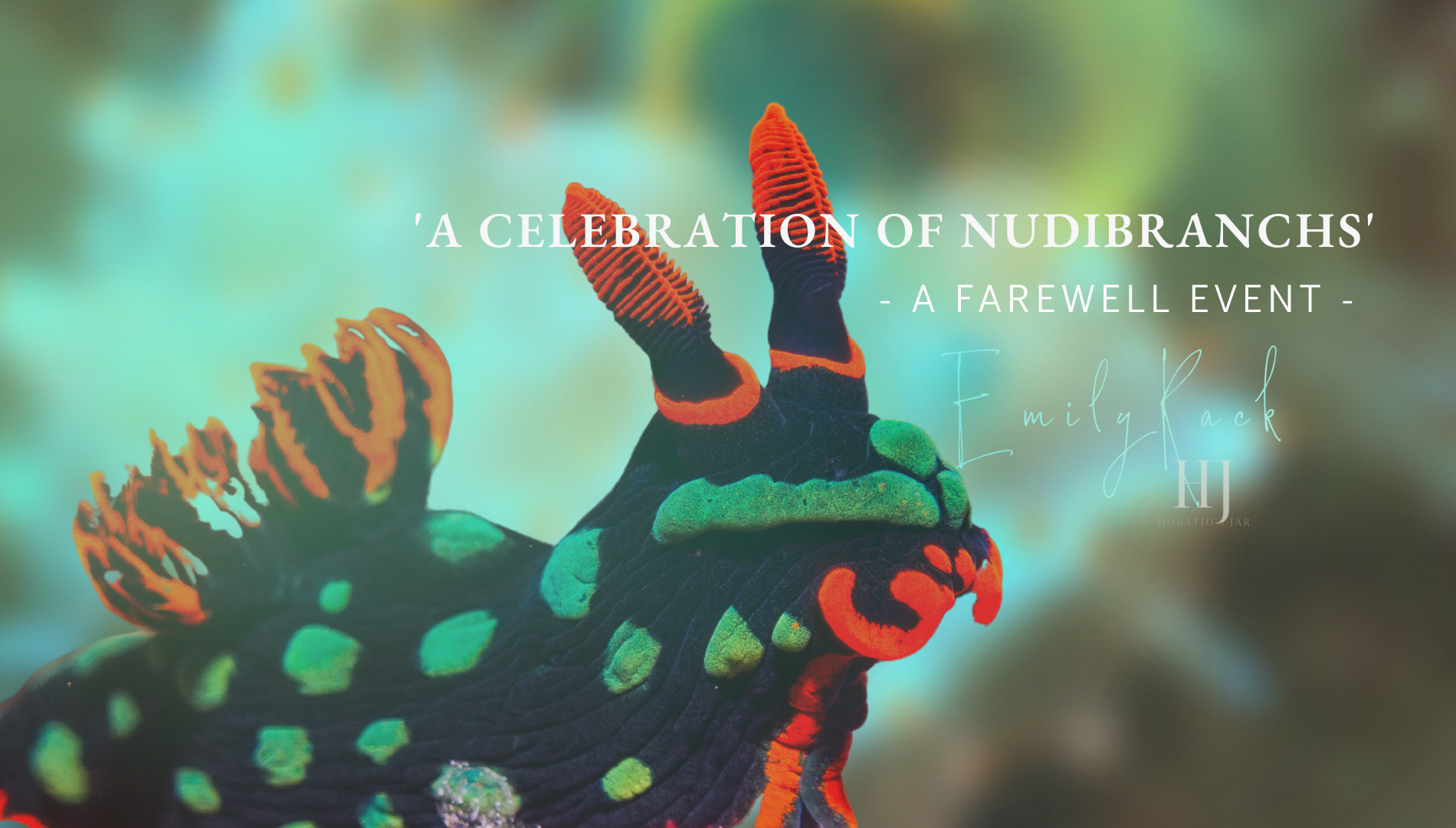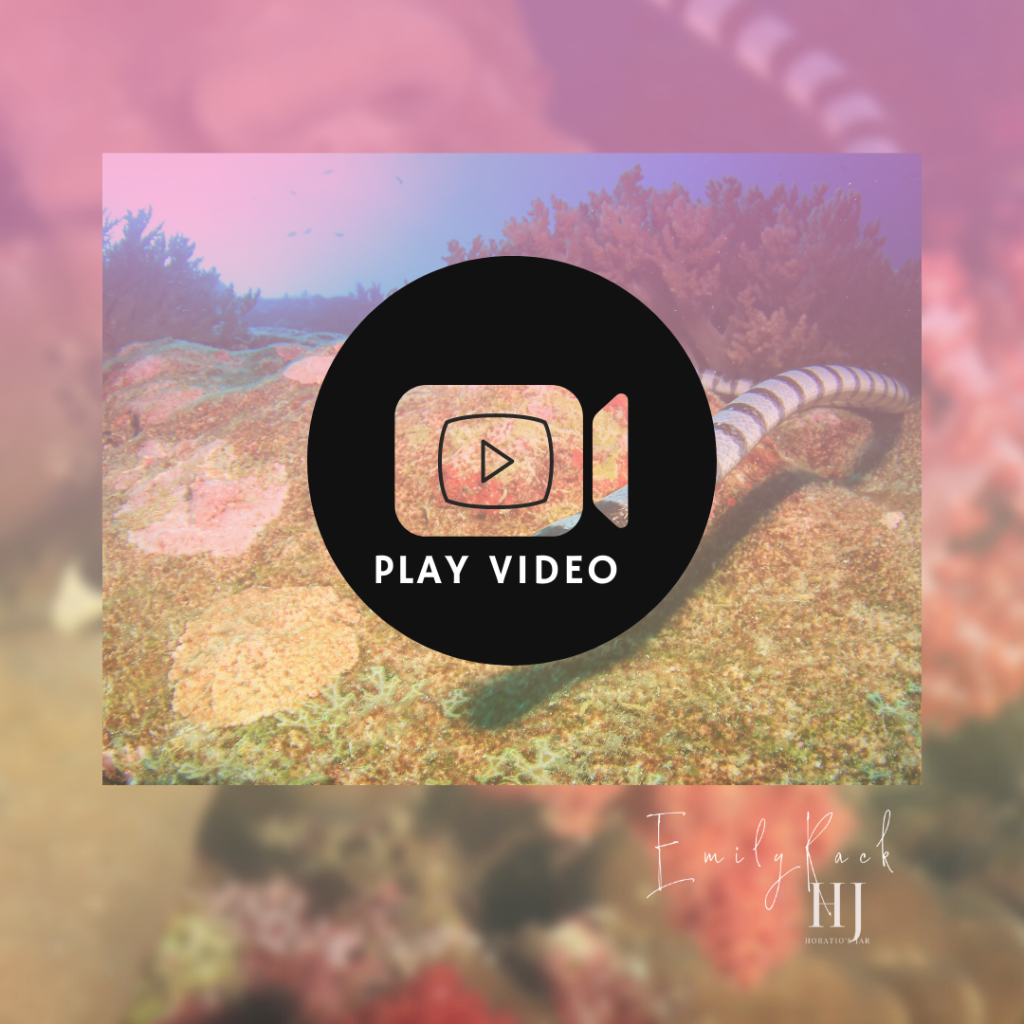Published by: Digital Schools
A Celebration of Nudibranchs – A Farewell Event
Nudibranchs are not only brilliantly adorned harlequin shapeshifters and chemical manufacturing killing machines – These oceanic wonderments have other exciting abilities no one thought possible.
One among their kind (only one) can harvest the DNA of plants and then use the code to manufacture its own photosynthesising cells. Meaning – it eats algae, maps the information and becomes the only animal we know of that is half-plant, half-animal. Is this a new form of symbiosis? Or identity theft?
Written by Emily Rack @horatio’s_Jar

Not so cute – The Nudibranchs aren’t Just a Pretty Face
Nudibranchs are soft bodies gastropods – Sea slugs. This means they haven’t a shell so while slugging about and sometimes attempting to swim (in spasming motions that resemble clapping with one hand), their squishy, maybe slimy, frilly and brilliantly colourfully costumed bodies are vulnerable.
Their meaty wobbly bodies and sedentary lives make them easy targets on the sea floor. But Nudibranchs are far from a tasty snack or a slimy one. Nudibranchs are super toxic and have an arsenal of chemical defences that they deploy on anyone silly enough to try to take a bite.

Pretty & Toxic
Bright colours like the ones Nudibranchs have are usually a dead giveaway in the animal kingdom that these cute Pokémon-like beings are packing a toxic punch. Bright colours scream, “Back Off”, and Nudibranchs are not the only aquatic animals with a ton of venom and very pretty packaging.
Sea snakes are venomous, some deadly and usually display coloured bands of black, white and yellows to advertise their danger. Other animals with distinct bold patterns to warn predators are the poison dart frogs. They are coloured in metallic blues, tomato reds, sunny yellows and spotted; often, their bright colours are contrasted with black.
Watch the Banded Sea Snake – Or Krait
The Banded Sea Snake is a venomous tropical species found in the warm waters of the Pacific. It has a yellow-tipped face, banded black and white body, and a paddle-like tail.
In our weird adjacent reality colours are used to communicate, warn, and attract. Traffic lights, roadsigns and high vis construction workers are all interpretations of the signs nature delivers in her wordless language of colour. (Gives you something to consider next time you see someone dressed in a colour sequence that in nature means – ‘warning I am toxic!).


And with that being the end of our Nudibranch Celebration, I hope the takeaway for you is that – nature is incredible, and everyday we find more awesome discoveries that completely blow the mind. The problem is, as we learn how wonderful life on the not-so-green planet is, all the really cool stuff is going extinct.
In nature, beautiful colours attract, defend and ward off attacks. In the world that is nature, colour is a language, and it’s an effective one if you care to learn. Without saying a word nature is speaking to you, you just need to pay attention.
The End.

Guest Contributor: Emily Rack
Business Name: Horatio’s Jar
Publisher: Digital Schools
Emily Rack is a freelance creative writer and researcher, visual content creator, and designer. She is the head of the content production, publication – and editing for Upschool+ Guest Contributors -, and Horatio’s Jar is her content production agency and wellbeing school.
Emily has dedicated her life to researching and understanding matters of the mind, body-, and the human experience. Her discoveries and research are focused on cultivating tools and dialogue that encourage us to live in peace and harmony here on earth.
Her current focus is the environment and human connectivity, conservation, environmentalism, plant medicine, botany, biology-, and the practice of ‘Nature Bathing’. Emily is a writer, digital content creator, seasoned photographer-, and visual artist.
——-
PUBLISHER’S DISCLAIMER: The publisher of this blog post (Digital Schools PTY LTD) works in partnership with the school as a 3rd party provider to help build and maintain the school website. Digital Schools sources a range of experts who provide products and/or services to educational institutions and we work with them to produce and publish topical information in the form of blog posts that we think may be relevant, interesting or topical to families within the community. The views, opinions and content listed in this blog post are that of the guest contributor and/or publisher (Digital Schools). It should be noted that whilst the publisher and guest contributors are acting with the best intentions and in the best interests of the school and their community to provide helpful or interesting information, sometimes the content may not necessarily reflect the views of the school.
The information in this blog post is not meant to be used, nor should it be used, to diagnose or treat any medical condition. For diagnosis or treatment of any medical problem, consult your own physician. The school and the publisher of this blog post are not responsible for any person reading or following the information in this article who may experience adverse effects.
Any references to external websites or sources are provided for informational purposes only and do not constitute an endorsement by the school or publisher in any way and the publisher and/or school cannot guarantee the accuracy of the information listed.
If you have feedback on any content on this platform, you can submit it to the publisher using the feedback link provided at the bottom of this page.



